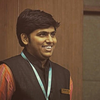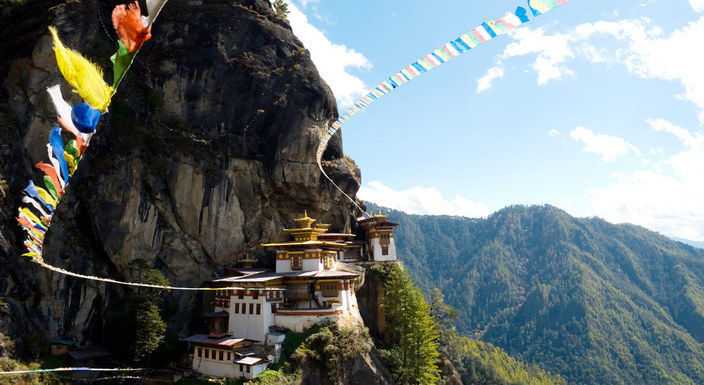
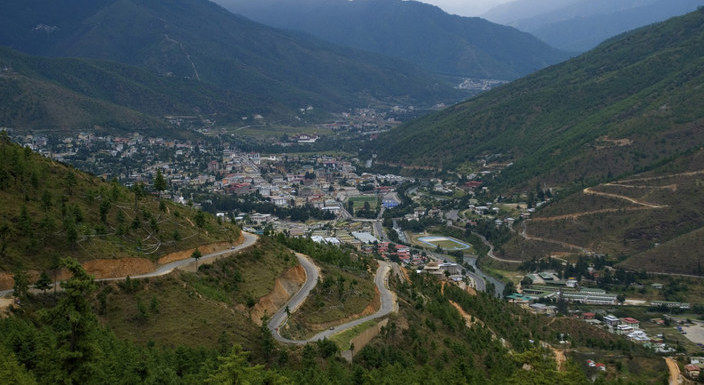

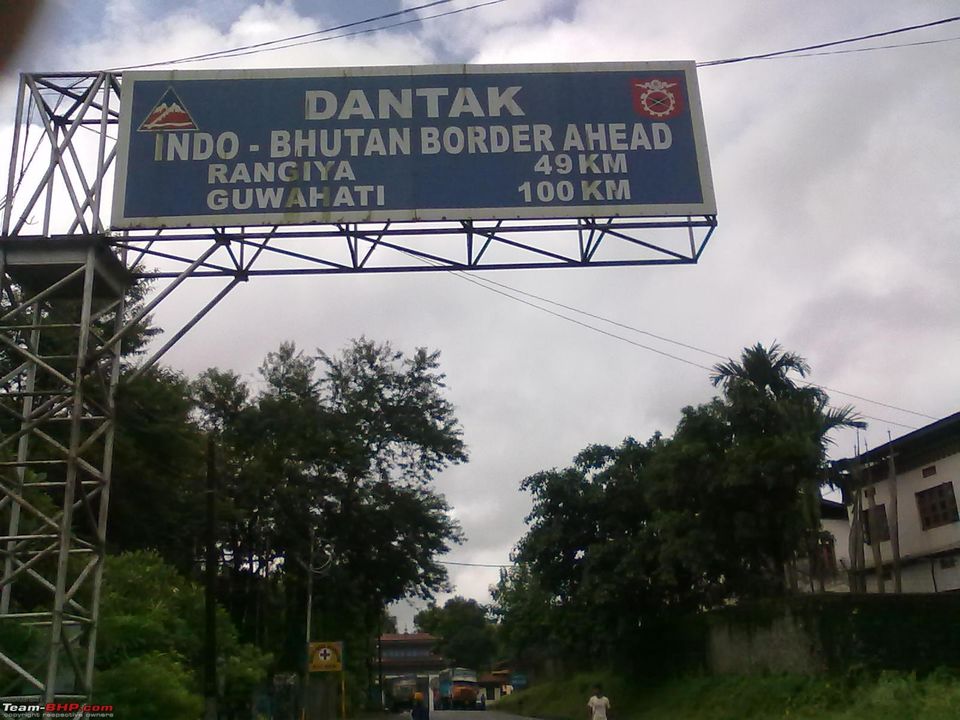


First common question many of my curious friends asked was: “So after being to Bhutan, are the people there truly happy?”
“I believe so, haven’t met a sad person there so far.” I replied delightedly.
The many warm and charming personalities that I met in Bhutan lead simple lives and are very contented. Whether its the people living in the urbanized capital of Thimphu or in the remote villages they exude a sense of peace and happiness from their hearts which is definitely impossible to impose. They exchange greetings with each other on the road and are happy to meet a fellow sentient beings. Perhaps this is the effect of upbringing and living in small knitted communities they have. For example, there are only 2,000 villagers living in Gangtey and 110,000 people living in Thimphu Town.
Despite having a low per capita income, there are no beggars in Bhutan. They live a dignified and contented life. Most of them are also self-sufficient, employment in the city is a means to a living but subsistence farming is also a common means for the Bhutanese.
I am most intrigued by Bhutanese hospitality they consistently displayed. Every visitor to a family is definitely welcomed with milk teas, cookies and some local tidbits. The Bhutanese spare no attention for their guests and ever welcoming. The company and attention they showered on their guests made each visits and conversation memorable.
In my short stay in Bhutan, I had the good fortune of visiting a Bhutanese family. Dinner with guests is a grand affair and their will put on some of their best delicacy for their guest. What I adore is the close knitted family unit. I understand that most Bhutanese eat their meals at home and as a family. These simple pleasures or rather frequent family bonding are quality time they spend together.
Once we arrived in Paro, we took the pre-arranged guide who transferred us to our hotel Terma Linca in Thimphu… Thimphu: Capital to the tiny Himalayan kingdom of Bhutan, Thimphu is one of the smallest capitals in the world. For most part of its history, Bhutan has tried consciously to save its culture from the blunt influences of the western world. It is not that modernity has not reached this region, but they are being introduced in a phased and balanced manner that is unheard of at any place in the world. All these make Thimphu and other parts of the country a unique destination. Upon arrival, we checked-in at our hotel. After taking rest for some time , I was restless and decided to visit places: Trashi Chhoe Dzong: Also called Fortress of the Glorious Religion situated on north of the city on west bank of the Wang Chhu. The Dzong was the site of the lavish formal coronation of the fifth King in 2008 and hosts the city’s biggest annual bash, the colorful tsechu festivities. Opening times 5-6PM Mon-Fri, 8AM-6PM Sat & Sun. National Library: housing an extensive collection of priceless Buddhist manuscripts; the Institute for Zorig Chusum (commonly known as the Painting School) where students undergo a 6-year training course in Bhutan 13 traditional arts and crafts. Laterin the evening spent time at our own leisure and enjoy the warm dinner before you go to bed and went early to bed since tomorrow was like lots of sightseeing.. After breakfast the next day, proceeded for sight-seeing. Buddha View Point: Another place from where you can get a good overview of the Thimphu valley is from the Buddha point (Kuensel Phodrang). You can pay your obeisance and offer prayers to the Buddha, the largest statue in the country and then walk around and take a glimpse of the valley. Simtokha Dzong: monastery was built in 1627 by Zhabdrung Ngawang Namgyal. It houses the Institute for Language and Cultural Studies. The carvings behind the prayer wheel in the courtyard are a major attraction of this temple. Memorial Chorten: also known as the Thimphu Chorten, is a chorten in Thimphu, Bhutan, located on Doeboom Lam in the southern-central part of the city near the main roundabout and Indian military hospital. Textile Museum: is worth a visit to get to know the living national art of weaving. Exhibitions introduce the major weaving techniques, styles of local dress and textiles made by women and men. Takin Mini Zoo: The Takin is the national animal of Bhutan, and looks like a cross between a cow and a goat. Legend has it that the animal was created by the great Buddhist yogi, Drupa Kunley, and it can be found only in Bhutan and nearby areas. In the evening, return to our hotel and rested overnight after a delicious dinner.
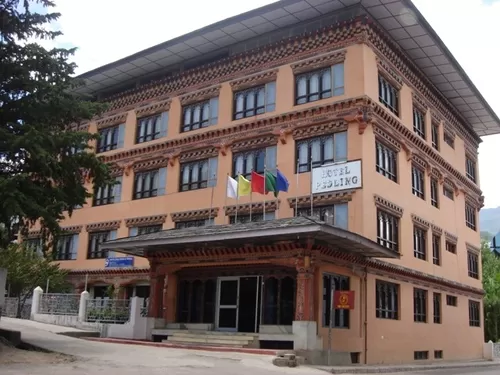
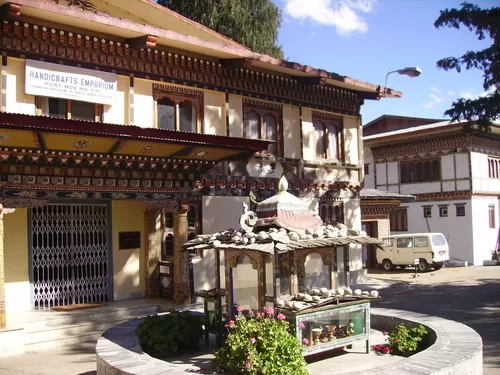
After breakfast this morning checked-out of the hotel and we all proceeded to Paro. Upon arrival at Paro, checked into Nek-Sel Hotal and Spa. We had lunch. Later, went for sight-seeing. Drukgyal Ruin Dzong: This was a fortress and Buddhist monastery, now in ruins, located in the upper part of Paro valley. The Dzong was built by Tenzin Drukdra in 1649 at the behest of Shabdrung Ngawang Namgyal to commemorate victory over an invasion from Tibet. In the early 1950s Drukgyal Dzong was almost completely destroyed by fire. Kyichu Lhakhang: Built in 659 by the Tibetan King Songtsen Gampo. It is believed to be one of the 108 temples built to subdue a demoness residing in the Himalyas and is also one of the oldest Temples in Bhutan. National Museum of Paro: Housed inside the revamped Ta-dzong building in Paro, National Museum of Bhutan is a cultural museum that has put on display the antique items gathered from different parts of the country. Rinpung Dzong: is a fortress that serves both as a civil administrative center and as a monastic home for a community of monks. The Paro Dzong was started in 1644 on the order of Shabdrung Ngawang Namgyal, the unifier of modern day Bhutan. Unlike most of the Dzongs in Bhutan, it survived the massive 1897 earthquake mostly unscathed, though it was damaged by fire in 1907. In the evening, we returned to our hotel and rest overnight after a delicious dinner. Morning after breakfast, we had choice to EITHER go for an excursion tour to Chele La Pass & Haa Valley OR hike up the hill to visit famous Tiger’s nest temple and spend rest of the evening in the local market. Obviously we chose hiking up the hill. Chele La Pass and Haa Valley: At over 13,000 ft to the west above the Paro Valley is the highest road pass in the country and has amazing views of the Himalaya and most significantly the magnificent Jhomolari, Bhutan's most sacred peak at over 22,000 feet. It is a one and a half hour drive from the valley floor in Paro to the pass. The views from here are absolutely mind boggling as the sweep of the snow clad Himalayas lie before you. On return from Chele La spend the evening at leisure in Paro town for some souvenir shopping and get a feel of local Paro town. Taksang Monastery (Tiger’s Nest Temple): The most famous of Bhutanese monasteries. It is said that Guru Rinpoche arrived here on the back of a tigress and meditated at this monastery hence it is called Tiger’s Nest. Precariously perched on the edge of 1,200 meter cliff, this monastery creates an impressive sight, and is the unofficial symbol of Bhutan. It is about 2 hour up-hill hike or ride a horse from the parking lot to the monastery. If the full hike sounds a bit tough you can hike for 1 hour to the cafetaria, a wooden tea-house restaurant which offers a good view of the monastery. After visit to the monastery spent the evening at leisure in Paro town for some souvenir shopping and got a feel of local Paro town. In the evening, returned to our hotel, enjoyed our dinner and a comfortable overnight stay. The following day we left for Delhi.
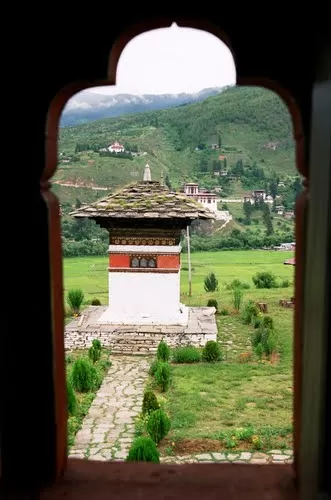
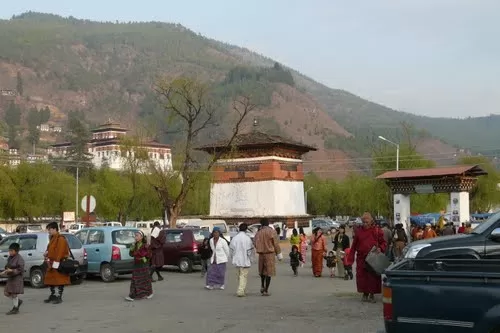
Frequent searches leading to this page:-
cost to visit Bhutan, Bhutan private tour, holiday in Bhutan cost, best holiday packages for Bhutan, Bhutan family tour packages, Bhutan packages from Mumbai

